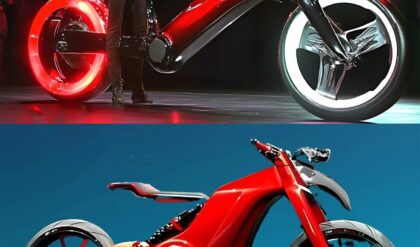After Kurt Cobain formed Nirvana in 1987, he became the face of an underrepresented generation and a pioneering figure in the counterculture movement of the period. Nirvana were a prominent band in the grunge genre, which evolved from the Seattle music scene.
Although the band came to an end after only seven years due to Cobain’s tragic suicide, Nirvana remain one of the most influential bands of the past 30 years. Cobain was renowned for his lyrical themes, which explored anti-establishment, alienation, and were fuelled by angst and disillusionment.

Not only did Nirvana play some incredibly heavy tracks that weaved intense basslines with memorable riffs and Dave Grohl’s pounding drums, but Cobain’s lyrics tied everything together, helping to attract an even wider fanbase that related to the musician’s words.
Cobain’s lyrical talent has often overshadowed his guitar-playing, which has often been disregarded as unprofessional and sloppy. Yet, it is unfair to declare that Cobain wasn’t an influential guitarist. He may not have had the same talents as Jimi Hendrix or Eric Clapton, but his riffs have inspired countless people to pick up a guitar, and without them, we wouldn’t have Nirvana.
Another important reminder of Cobain’s guitar talents is ‘School’ from Nirvana’s debut album Bleach. Cobain makes a powerful statement about the cliques of the music scene, which he compares to high school, despite a limited set of lyrics.

Instead, the statements are driven home through Cobain’s aggressive riff, which works in harmony with a slow and whirring bassline performed by Krist Novoselic, it’s the kind of guitar work that shows Cobain’s purposeful playing to a tee.
Firstly, ‘Smells Like Teen Spirit,‘ a classic Nirvana track that even non-music fans will recognise. The song begins with an intense thrashing of instruments that is championed by Cobain’s iconic riff, which most people can recognise through a one-second hum of the notes.
Even though Cobain’s riff is so simple, it is the perfect addition to the track, which contains a raw and anthemic chorus and Grohl giving his all on the drum kit.
Another Bleach track worth mentioning is the blistering ‘Negative Creep.’ Cobain’s guitar is thick and heavy and pummels through the soundscape as he screams, “I’m a negative creep and I’m stoned”, before he performs an incessant and unnerving squeal.
The combination of the grungy riff and Cobain’s intense vocal delivery is quite frankly terrifying – but in the best way possible. These are the songs that have turned Nirvana into the ultimate band for teenage rebellion and adolescent angst.
In 1993, Nirvana released In Utero, which retained the abrasiveness of their past two albums whilst also developing a more refined and personal sound. Although less radio-friendly than Nevermind, the album still contains some of the band’s biggest hits, such as ‘Heart-Shaped Box’ and ‘All Apologies.’
The latter is a great example of Cobain’s ability to do subtlety as well as intensely cathartic, thrashing riffs. The song begins with a haunting and repetitive riff played in drop D, which is the perfect ending track to the band’s last album before Cobain’s death.
Finally, another Nevermind tune, ‘Breed.’ This is definitely one of the band’s more accessible tracks. However, Cobain’s riff is an excellent driving force, which accompanies an anthemic chorus. Three-quarters of the way in, a fuzzy guitar solo dominates the track whilst Novoselic’s bass line plays faultlessly in the background
The guitar solo is far from self-indulgent too. Instead, it retains the indifference of Cobain’s lyrics. Although the guitar slots into place with the other instruments effortlessly, this is exactly why Cobain’s performance on the track is so impressive.





